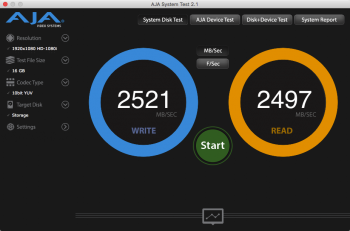This card really is a very nice upgrade. It allows you to get speeds internally in the cMP that the nMP can't reach the same way.
I personally got it more for the space savings... being able to run the boot SSD and 3 other SSDs in RAID 0 all on one PCIe card has been amazing. And everything still runs at full speed, so my boot SSD at 1400MB/s and my RAID averages around 3500MB/s... perfect for a scratch drive or full media drive fore smaller projects.
Can't recommend it enough.
I personally got it more for the space savings... being able to run the boot SSD and 3 other SSDs in RAID 0 all on one PCIe card has been amazing. And everything still runs at full speed, so my boot SSD at 1400MB/s and my RAID averages around 3500MB/s... perfect for a scratch drive or full media drive fore smaller projects.
Can't recommend it enough.








